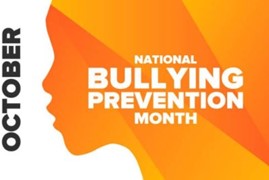What to Do About Workplace Bullying
Bullying is often thought of as a kids’ problem. But it also often happens to adults in the workplace. Workplace bullying involves multiple, repeated, intentional acts of aggression, hostility, social isolation, disrespect or mistreatment of an employee by another employee(s). It can include work sabotage or behaviors perceived as threatening, intimidating, or humiliating. These acts often happen in person but also can occur through email, text messaging, and social media (1,2).

Workplace bullying is common. According to a 2021 survey of U.S. adults from the Workplace Bullying Institute
- 30% of adult Americans are bullied at work.
- 43% of remote workers are bullied.
- 61% of bullying is same-gender bullying. What does bullying look like?
Here are examples of common workplace bullying behaviors (1,2).
- Intentionally sabotaging or undermining a coworker’s performance, such as falsely accusing someone of “errors” not actually made.
- Giving a coworker constant and unwarranted criticism.
- Cursing at, threatening, or humiliating others.
- Spreading or failing to stop destructive gossip or rumors about a person.
- Willfully excluding or ignoring a colleague, such as using “silent treatment” to “ice out” and separate from others.
- Suggesting a coworker quit or transfer to a different department in the company.
The Workplace Bullying Institute survey also asked about why workplaces become toxic and abusive.(1) Almost half of respondents identified organizational factors including retaliation for filing complaints, management history of responding to complaints, and human resources’ response to complaints. About one-quarter identified the bully/perpetrators’ personality or personal problems and 13% identified coworkers’ reluctance to help the targeted individual.
Harmful Physical and Psychological Impacts
Experiencing bullying and hostility at work can be a significant source of physical and emotional stress. Being the target of bullying can contribute to increased
- Insomnia and other sleep problems.
- Gastrointestinal distress.
- High blood pressure.
- Headaches.
- Anxiety.
- Symptoms of posttraumatic stress disorder.
- Depression.
Workplace bullying can also be harmful and costly for organizations. It can contribute to reduced productivity and greater employee turnover, and can harm a company's reputation and weaken employee morale. People who work in hostile environments are more likely to be absent from work and to leave the company (1).
Employer Actions to Eliminate Workplace Bullying
A recent analysis of workplace bullying in Harvard Business Review notes that “While bully characteristics matter, bullying is a behavior of opportunity enabled by organizational environments that allow it to occur and continue. . . . Effective anti-bullying mechanisms are rooted in organizational justice, transparency, a focus on outcomes, and the use of valid instruments in decision making. They are supported by tools that facilitate inclusive, flexible work; voice; and participation”(4).
Among the actions employers can take are
- Fostering a positive and supportive work culture so employees feel safe talking about incidents with supervisors or human resource specialists.
- Acknowledging that workplace bullying exists, is real, and is a problem; not dismissing bullying as “healthy aggression” or competitiveness.
- Developing guidelines identifying acceptable company standards of conduct.
- Training employees and managers on workplace aggression.
- Reminding employees about the organization’s employee assistance program (EAP) and how to access these services, including individual counseling.
(Adapted from the Center for Workplace Mental Health)
Actions Employees Can Take
Actions for individuals being targeted (5)
- Remind yourself that the bullying is not your fault and it’s not about your work ability.
- Document the bullying. Keep track of all bullying actions in writing.
- Save physical evidence, such as threatening notes, emails, documentation of denials, etc.
- Report the bullying.
- Confront the bully, in the presence of a trusted coworker or other witness. Be calm, direct, and polite.
- Seek legal advice.
- Reach out to others. Co-workers may be able to offer support. Sharing with supportive family and friends can also help. Reach out to a mental health professional if you’re feeling overwhelmed and distressed.
Suggestions for coworker actions to address bullying from the Workplace Bullying Institute suggestions that coworkers can help by:
- Letting them know they are not alone, and it is not their fault.
- Offering help. People targeted are often too ashamed to ask.
- Validating the target’s emotions.
- Organizing others, as a group, to confront the bully.
Adults can also be victims of online bullying and the Cyberbullying Research Center provides tips for adults on Responding to Cyberbullying.
References
- Kuhl, E. 2017. Workplace Bullying is Costly. Center for Workplace Mental Health
- Workplace Bullying Institute
- Workplace Bullying Institute. 2021 WBI U.S. Workplace Bullying Survey
- Praslova, L.N., Carucci, R. and Stokes, C. 2022. How Bullying Manifests at Work — and How to Stop It. Harvard Business Review.
- Raypole, C. 2019. How to Identify and Manage Workplace Bullying. Healthline.
